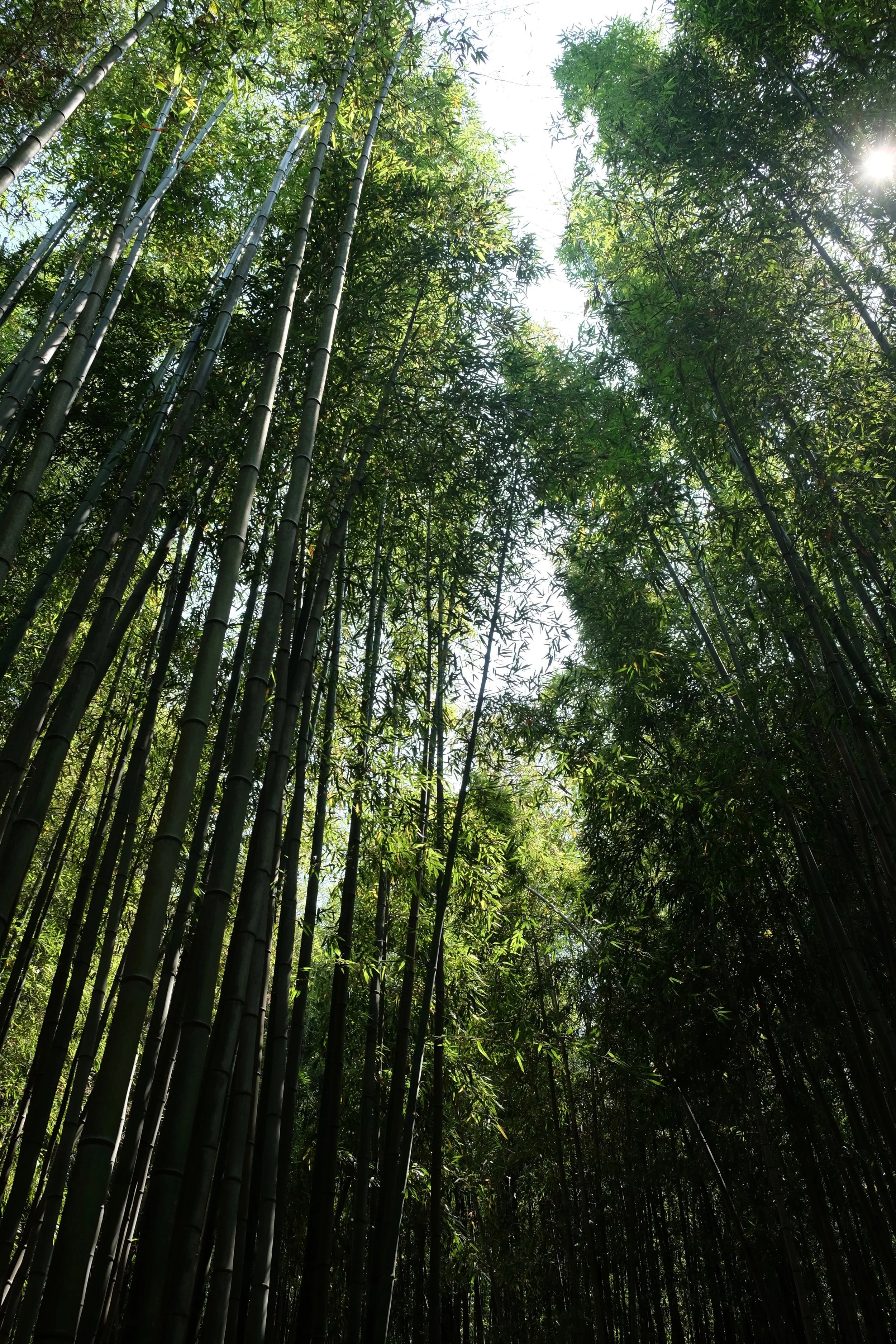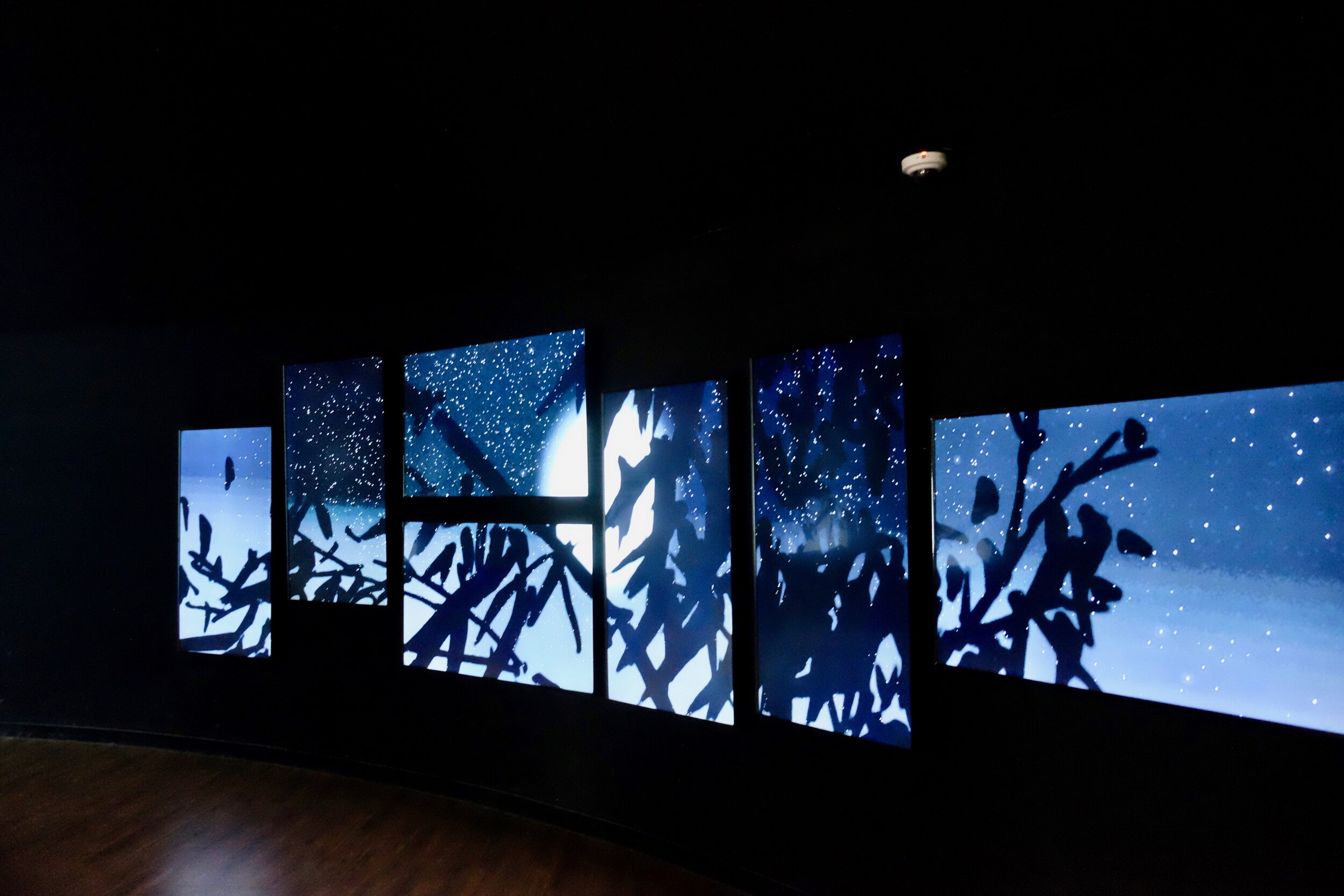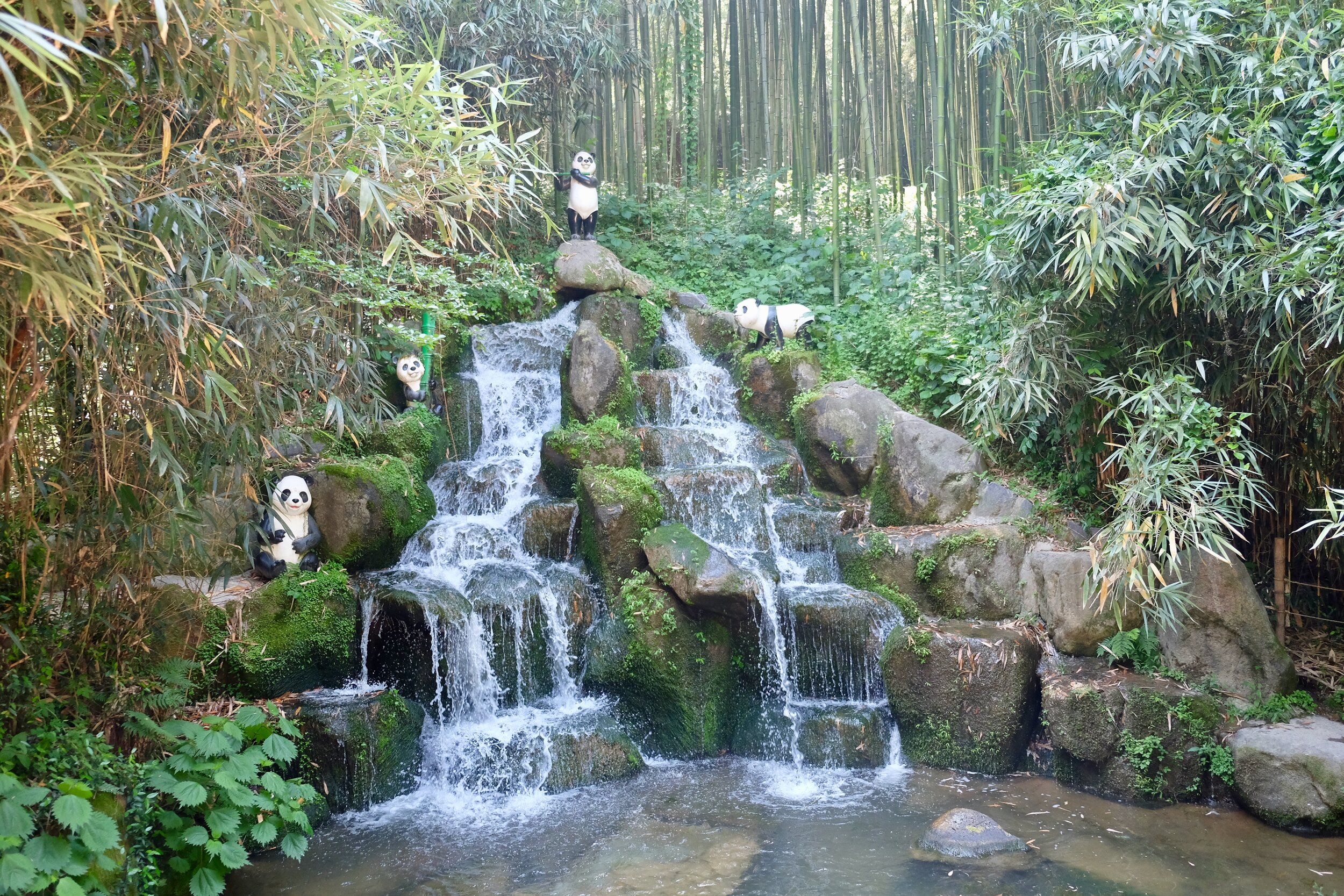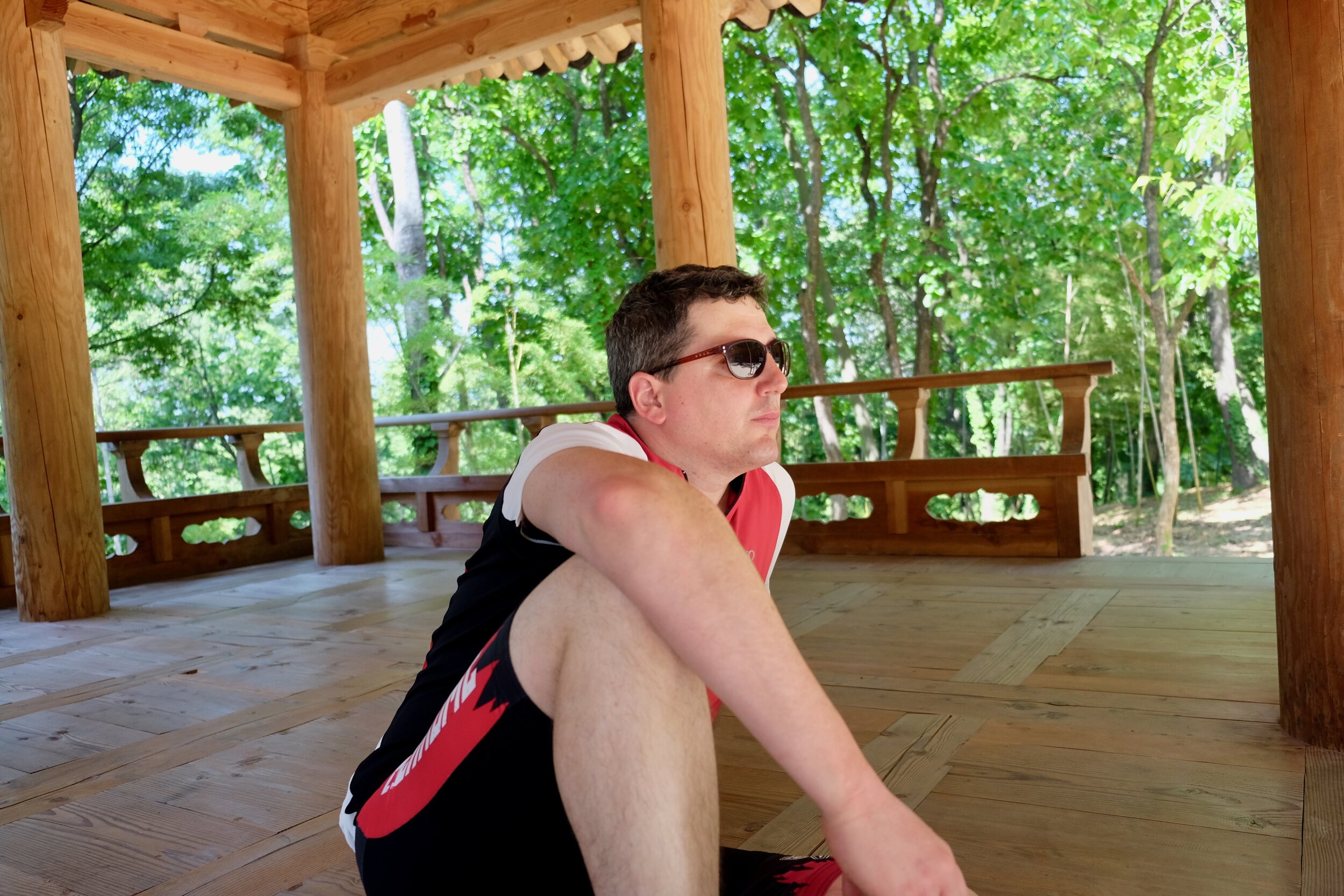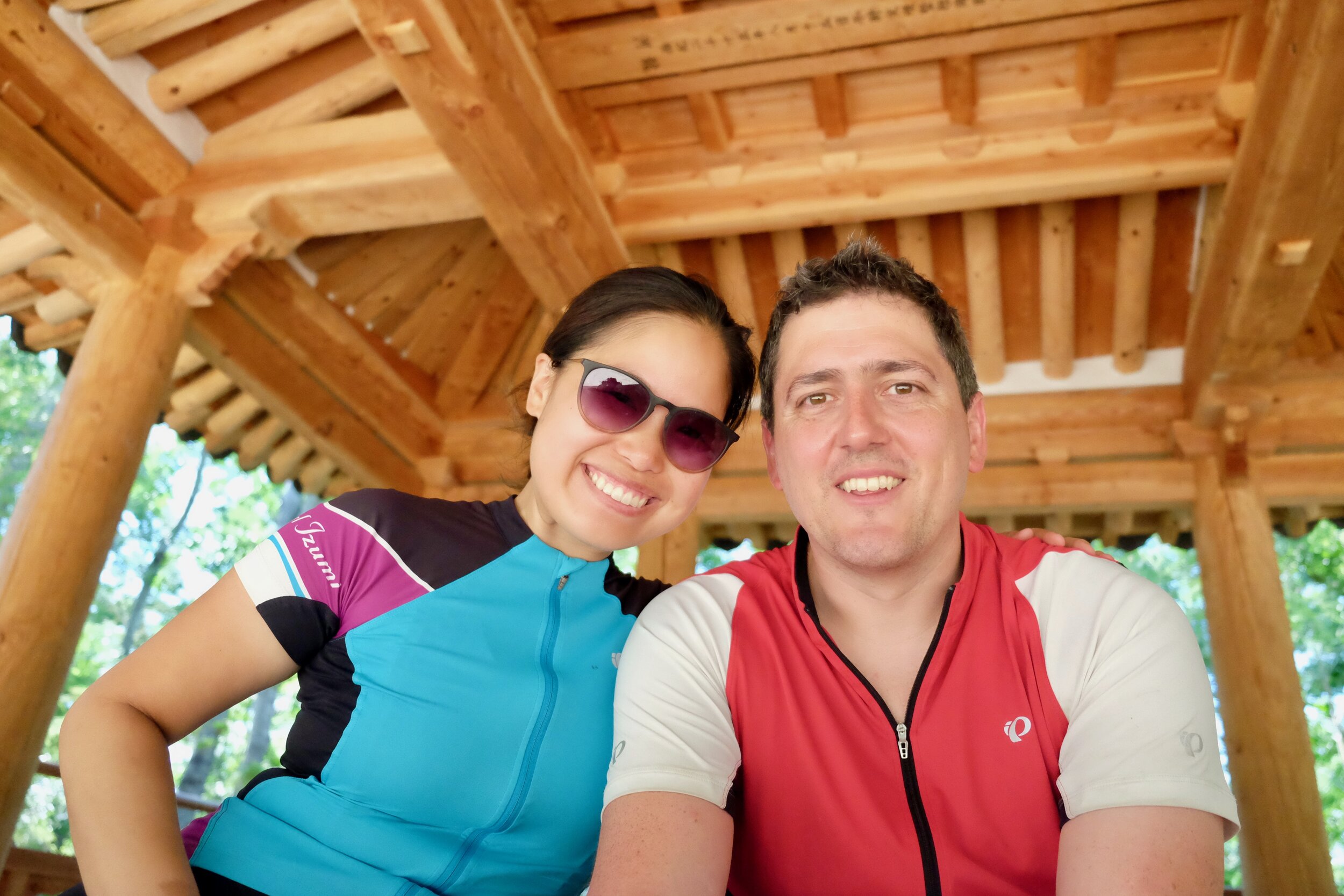Ride: Gwangju, South Korea to Damyang, South Korea
Distance: 78.8km
Terrain: There is a clearly marked bike path for the entire journey, and the terrain was ridiculously flat. Beware that if you miss the sign for the Four Rivers Trail (which we obviously did), you’ll have to slog through city traffic. Otherwise, you land at Damyang’s doorstep easily enough.
To interact with this map, visit Jess’s Strava account here.
Today was technically a rest day, but as readers can already tell, “rest” is a relative term for us. Doing nothing doesn’t come easy. So today we decided to leave the panniers behind and take a short trip to Damyang to visit the Juknokwon Bamboo Forest, which we had heard good things about from our friend Da-Woon, who hails from Gwangju proper.
It should have been a straightforward 80 kilometre round trip, since a bike path ran the whole way. But somehow, we missed a crucial turn and found ourselves trudging through one congested intersection after another for an hour. This was incredibly painful due to the fact that crossings here take forever, cars don’t respect when pedestrians have the right of way, and people walking along the bike path in town lack situational awareness. Add in the general riff-raff from the street and train tracks that bisect the city, and you’ve got a one way ticket to a highway overpass that isn’t designed with cyclists in mind at all.
By the time we cleared the traffic north of the city, had said a choice expletive or two, and made our way onto the actual bike path, it was over 30 degrees. But Damyang is only about 40 km away, and on an unloaded tandem, we covered the distance easily, in no small part due to the fact that the terrain was flat, flat flat.
The charm of Juknokwon can be felt the moment you step into the lush bamboo forest. One adult ticket costs 3,000 won and immediately, the frustration of the day’s stuttering start dissipated as we breathed in deeply. The calm wind and deep shade keep the forest at 4-7 degrees Celsius cooler than the surrounding areas, and the air is rich with oxygen.
Bamboo trees keep their vibrant green colour until well into winter. The forest floor is littered with the fallen leaves and new sprouts, providing a chance to see untouched nature - the land has been left to its own devices this whole time, and in 2003, the park was created to allow people to enjoy its organic state.
Juknokwon is threaded with paths totalling a distance of 2.4 kilometres, enough for visitors to fully take in the dense forest in a couple of hours of gentle strolling. From the starting point at the observatory, the trail divides into eight paths with various themes, ranging from “Lovers’ Road” to “Old Memory Bypath” and “Philosopher’s Road”. Visitors can also find statues of pandas and beautiful pagodas throughout the forest. There’s also an art gallery on the premises with exhibitions by local artists.
The gentle swish of the bamboo trees above turn the entire experience into a deeply meditative one. If the intensity of urban life in Korea has left you feeling a little strung out, you could do a lot worse than visit here on a weekday and enjoy the soothing atmosphere of this special, unique place.
When you’re done walking through the forest, you can eat at one of the many street-side restaurants along the bridge - ours was family owned and cost only 8,000 won for two heaping bowls of hot noodles. Bamboo-related cuisine is a speciality around these parts, as the local townspeople take great pride in sustainable farming to ensure that nothing goes to waste.
One our way back, we stuck to the bike path (it’s easier to do so coming the other way), thus avoiding the city traffic from earlier in the day. As the May 18th Memorial was on the way, we decided to take a slight detour in order to visit this historic monument.
We rattled off some facts about Gwangju in the previous post, but what it is also known for, for better or for worse, is the 1980 uprising against the government, an event which resulted in a brutal massacre of civilians. In 1979, General Chun Doo-hwan was part of a team given the responsibility of investigating the assassination of President Park Chung-hee, but used the opportunity instead as a springboard towards his own leadership of the country.
Staging in a coup in December of that year, Chun took control of the country, and on May 17, 1980, he authorised martial law throughout the nation in order to squash student protests against his rule. The extended martial law closed universities, banned political activities, and further curtailed the press.
From May 18 to 27, 1980, Gwangju citizens took up arms by robbing local armories and police stations, after students of the local Chonnam University who were demonstrating against the martial law government were fired upon, killed, raped, and beaten by government troops.
The number that died is still not known for sure, and was exaggerated by both parties involved at the time - the official report says just over two hundred, but some estimates put it at over two thousand. Comparisons with the Tiananmen massacre in China are inevitable, an event much more widely known in the Western world despite what historians argue may have been a similar death toll. While Beijing keeps a tight lid on its nasty secret, Koreans flock to Gwangju each May to pay tribute to those who lost their lives.
The Gwangju Uprising had a profound impact on South Korean politics and history. Chun Doo-hwan already had popularity problems due to his taking power through a military coup, but authorising the dispatch of Special Forces against citizens damaged his legitimacy even further. It also paved the way for later movements in the 1980s that eventually brought democracy to South Korea.
Support or denial of the Gwangju Uprising has long acted as a litmus test between conservative and far right groups and beliefs, and mainstream and progressive sectors of the population. Jess’s parents were also students during this time (albeit in Seoul) and it was one of the main drivers that pushed them to immigrate to the United States, where Jess was born seven years later. So coming back here and reading the names of everyone who died at around the same age as she is now, standing up for what they believed in, was a harsh reminder not only that life is too short, but also just how much of her heritage Jess still didn’t know.
Each tile contains the name of one victim.
The day ended on a sobering note, and we decided to go for a nice dinner in an effort to cheer up slightly and enjoy our final night in Gwangju. Luckily, right across the street from our hotel was Hwangsolchon Restaurant, which just happened to be the highest rated Korean BBQ joint in the city. We feasted like kings on two portions of meat, rice, doenjang jjigae (tofu stew), and two beers - all for 41,000 won. Again, for a city this size, food was plentiful yet affordable, and it’s easy to see why many young people still choose this region for school and employment.
Afterwards, we wandered into a bar called the Amble, which looked like a carbon copy of the Savoy in Busan (including an identical record wall) to plan our next couple days. Tomorrow, we start to head back up north towards Seoul, with Jeongeup and a huge climb being our first stop on that segment.
As we reflected on our short time here, we thought back to a few weeks ago, when our friend Da-Woon talked us through the country in great detail, getting us excited about all the regional specialties we had to eat, and things we had to see. When he raved on about Gwangju, calling it the best city in the country, we took it with a pinch of salt, assuming that this was just his regional bias talking. But now, after a couple of days in this laid-back yet energetic and very liveable city, we’re starting to think he might have a point.
Back on the road in the morning. Thanks Gwangju, you were incredibly good to us.
